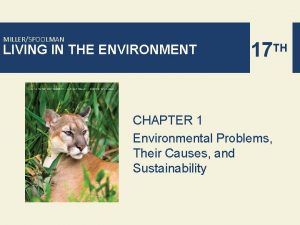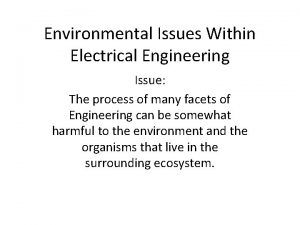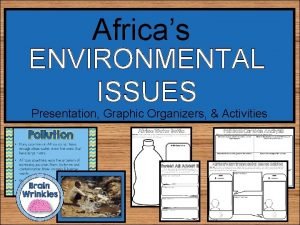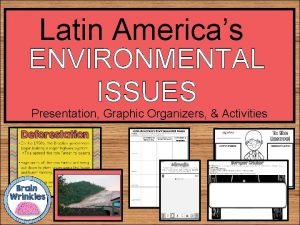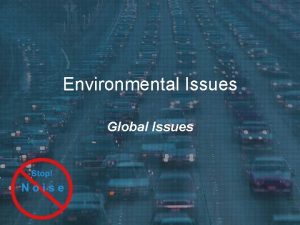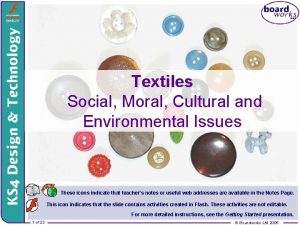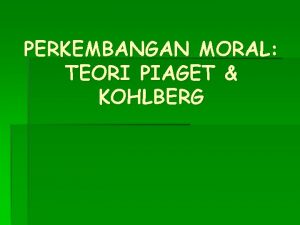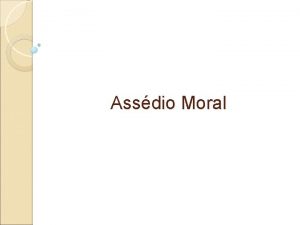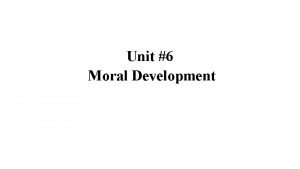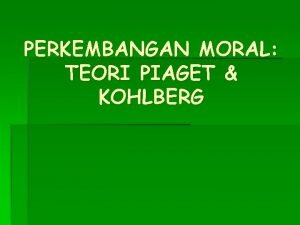Social Moral Environmental and Cultural Issues Cultural Normal












- Slides: 12

Social, Moral, Environmental and Cultural Issues

Cultural Normal habits in that country – e. g. in Japan people often sit on cushions on the floor to eat in Africa Red is the colour of mourning This includes fonts and background images! Designers must take into account the social needs of the group they are designing for. E. g. if designing for teenagers (13 -17) a designer should take into account different groups such as, emo’s or goths. Offensive language or signs. Can be about using cultural images e. g. using a batik print in an advert in China Red is considered lucky a careful choice of name, shape and colour can help promote a sense of unity between different global cultures. Colours

Cultural issues can arise when a new product does not take into account the fact that a particular shape, colour or name can have very different meanings to different groups of people. Designers have to take care not to offend groups of people with different traditions and beliefs. This is particularly important if the product is going to be sold in a multi cultural society such as ours! Cultural techniques being replaced by machinery such as hand embroidery being done by machine, or hand grinding spices in a pestle and mortar to being ground in an electrical grinder.

following celebrities, celebrity branding and advertising used to make you want to buy a product What is acceptable to the whole of society or individual consumer groups? Manufacturing products generates jobs. Producing raw materials creates jobs What about the best interests of the customer? E. g. if you are a graphic designer working on and advertising campaign for a Fast Food outlet Following celebrities Peer pressure, Social Design can CHANGE social views Using lots of CAD/CAM can reduce the number of manual jobs but increase the number of highly skilled jobs Using Robots can reduce the number of manual jobs available as robots can work 24/7 Harry Beck – designer of the London Tube map. Went against social norms to redesign the layout of the tube map. People at the time thought that maps should be to scale and detailed

Social Case Study I really need this job so I can pay my bills and feed my children If I didn’t work for them would it make a difference to peoples lives? Graphic Designer offered a job working for a Fast Food Company Is it right that companies make money from enticing people to eat unhealthily? Should I design adverts that make people want to eat unhealthy food? Does anybody really care what my part in the Fast Food industry is? Does it really matter who I work for as long as I get paid?

Environmental 6 R’s Reuse, Recycle, Reduce, Rethink, Repair, Refuse Product life cycle Environmental cost of the raw material Transport of Goods/Materials Air miles/Food miles Can the product be maintained? Will this extend its lifetime? End of Product life – what happens to the product when it’s no longer needed? Oil drilling Deforestation Mining Pollution Biodegradable What materials are being use? Are they oil based (eg plastic), biodegradable or recyclable Carbon Footprint

Some companies say they will replant new trees to replace what they use. Think about how much energy is used to create your next design Does the product you designed damage the environment? Thomas Midgley was an American inventor who's two main inventions were so toxic to the environment that they were banned virtually worldwide and left a big impact on the ozone layer, his inventions were: chlorofluorocarbons (CFCs) and Tetra Ethyl Lead (leaded petrol). Primary – directly resuing a product eg donating your olld stuff to charity Secondary – using it to make another product eg turning an old pair of jeans into a bag Pesticides, chemicals pollution – workiers inhaling = cancer Decerease wildlife habitate

chemicals pollution Decrease wildlife habitat Tertiary –massive changes to the material. EG making textiles fibre from old plastic bottles (PET) Pesticides, workers inhaling = cancer Cheaper way to ensure crops grow well more likely to get a crop therefore more likely to receive an income – very important in 3 rd world countries


Moral Does the product contribute to a ‘throw away society’? What happens when the product is no longer useful? Do people find the material offensive eg fur or endangered hardwood? Obligation to inform customer of any safety issues e. g. not suitable for under three’s or Must wear Eye protection Material choice is it an oil based material? Can it be recycled? Will the product be produced in a fair way? Will it be made in a sweat shop or in a Fair Trade Co-operative Are there any health and safety issues Should it be a high quality product so it lasts longer? Think about how often you throw away

Does your design contain ‘intellectual property’ ie somebody else’s thinking? Could your next design be environmentally friendly? How can you make sure your next design supports the culture you are designing for? Does your design reflect the morals of your society? Designers can help the world move away from the negative environmental and social impacts associated with the increasingly expensive and inefficient practices of the linear economy. New paint container by Alex Machin that reduces both paint and packaging waste. It has a one-way pouring valve that prevents paint from drying out; the paint is stored in a bag made from a metallised polyethylene terephthalate (PET) that maintains its temperature – and the cardboard outer, plastic lid and valve can all be recycled. Riikka Suominen and Thea Engerdahl created a food packaging brand made from beeswax, a natural material that is sustainable and simple to produce while effectively protecting and preserving food Use of Genetically Modified crops to produce higher yield But we’re not sure of the effects on human health

 Moral social and cultural studies grade 9
Moral social and cultural studies grade 9 Environmental and resource efficiency issues
Environmental and resource efficiency issues Environmental ethics issues and possible solutions
Environmental ethics issues and possible solutions Moral realism
Moral realism Explain how dishes on a menu address environmental issues
Explain how dishes on a menu address environmental issues Electrical engineering environmental issues
Electrical engineering environmental issues Africa environmental issues worksheet
Africa environmental issues worksheet Explain how dishes on a menu address environmental issues
Explain how dishes on a menu address environmental issues Brain wrinkles southwest asia
Brain wrinkles southwest asia Graphic organizer about environmental problems
Graphic organizer about environmental problems Cambodia environmental issues
Cambodia environmental issues Environmental issues graphic organizer
Environmental issues graphic organizer Canadian shield environmental issues
Canadian shield environmental issues


